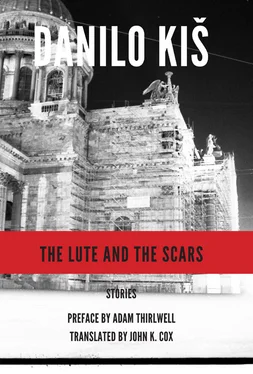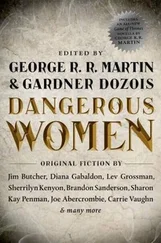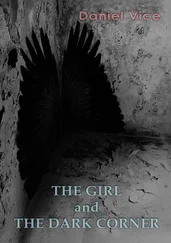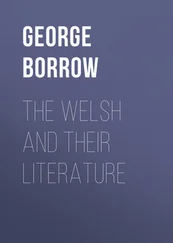In addition, we include a short character sketch:
Cetinje: secret policeman/tennis player: he has an odd way of walking, not peasantlike, or clumsy, not at all, but rather a gait that you couldn’t help but watch (even though a gait cannot be viewed or seen): it was, how shall I say, the walk of a peasant who is walking as if he were middle class, who thinks he is walking as if he were a middle-class person who plays tennis.
Subsequent to the first publication of this story in the initial edition of the collection The Lute and the Scars, we found amid some newspaper clippings a bundle of Kiš’s papers that contained several relevant items, including a bibliography that the author undoubtedly composed in the course of preparing his collected works. On one sheet from this bundle we found the following note that indicates the “sources” of this story, its nonfictional background:
People told me a story about a man somewhere who was arrested after the war on account of some subversive poetry. They threw him into prison and forgot about him. Then someone remembered he was there and ordered him the opportunity to clean up the mess himself: in place of his subversive poem (semiliterate slapdash work) he must write a poem with the opposite content. The man accepted the offer. They gave him a distant, very distant deadline, provided him with paper and a pencil: and said write, and erase, until it is first-rate. From time to time they summoned him and he read aloud his panegyric. “It could be better, more sincere !” they told him. People from the most prominent circles of the police force visited him and read through his variations. After ten years someone told him: “Well, see, now it is first-rate. The poem is sincere.” And — they let him go.
(So much for needing to research the relationship between an anecdote and a piece of fiction.)
The Debt
The story “The Debt” is preserved among Kiš’s manuscript papers on a total of seventeen typewritten pages. The complete manuscript of the version we provide here contains twelve numbered pages; in the middle of the first is the typed title “The Debt.” Four of the additional pages present what is in all likelihood a second version of the beginning of the story, in this case with no title indicated. On a separate page, on which the title is also to be found, there are simply five lines, which can be regarded as another variant of the start of the story.
Corrections on the twelve-page manuscript were carried out with a pencil throughout the entire text, with the majority of these occurring in the introductory section that precedes the enumeration of the “debts.” These corrections, judging by their apparent uniformity, were carried out in a single reading of the manuscript. The other corrections, decidedly fewer in number, were made in fine blue ballpoint pen (the story therefore seems most likely to have gone through only two revisions). The unfinished nature of certain sentences, which we encounter from the first pages of the story, along with superficial corrections that seem to be “final touches”—these all demonstrate that Kiš’s opinion of the introductory section was that it was only a temporary resolution. In the portion of the story where the enumerations occur, there are virtually no corrections of any kind, which shows that the frame-narrative was what caused the most problems for Kiš; once the list begins, the only narrative events are those concerned with the debts, and the underlying concept that life is passing before the protagonist’s eyes by means of this inventory, all of which was drafted without the least difficulty or deficiency (the process of enumeration that was so dear to Kiš). To judge by the large number of sentences beginning on one page and concluding on the next, we could even say that the story was produced in one session.
The title “The Debt” does not figure in any of the seven extant tables of contents for The Encyclopedia of the Dead , which would seem to indicate that the story was written after 1983. The reader will probably recognize the great Bosnian author Ivo Andrić in the character of “the debtor.” And this identification, among other things, leads us to take 1986 as the year of origin for the story: at that time Kiš was writing the foreword to the French edition of Andrić’s The Woman from Sarajevo . Although arising in connection with this special occasion, Kiš’s repeated focus on Andrić could also have been the stimulus for the production of this type of homage to that other writer, one of the closest relatives in Kiš’s “literary family tree.” Even the fact that the story remained unfinished validates our view that its genesis should be associated with the aforementioned year, before the end of which Kiš’s illness had manifested itself.
Nearly all the persons mentioned in this story are connected with Andrić’s early life (his schooling, his start as a writer, his first years in the diplomatic service) and Kiš located information about them in Miroslav Karaulac’s book Rani Andrić (The Early Andrić, Prosveta/Svjetlost, 1980), which he even mentions right at the beginning of the French foreword. Singling them out from the abundance of persons who come up in Karaulac’s study, he transformed them into character-paradigms via a process of extreme fictional compression, that essential hallmark of his prose. “Andrić is undoubtedly a moralist,” Kiš would go on to write, assessing the former’s literary works (“A Foreword to The Woman from Sarajevo ,” in Život, literatura , Svjetlost, 1990); thus both his selection of facts and his formulation of statements (often in the form of maxims) are made according to principles that might be ascribed to a writer-moralist. The story, however, functions as a double portrait (the portrait and the vase), for Kiš is also taking moral stock of his own experiences and inclinations (the delicate terrain of good deeds and gratitude). And we believe that readers will have an easy time identifying points of contact between the characters in this “double exposition.” (The last will and testament of Eugène Ionesco, published in Le Figaro littéraire after that writer’s death, was written in the form of a life reviewed as a balance sheet of debts; when compared with the story “The Debt,” which was written nearly a decade earlier, Ionesco’s will can serve as evidence that even literature knows something about wondrous coincidences and the affinities of kinship.)
Textual Notes:
They served as a kind of rosary : The following sentences were crossed out: “He needed to distribute his two hun- dred crowns fairly, the amount his stipend brought him, and not remain in debt to anyone. Because at this mo- ment he knew, with the lucidity that comes with the hour before death [.].”
The idea came to him, struck a part of his consciousness : This seems to bear little direct connection to what pre- ceded it, even considering the cancelled lines mentioned above. It’s difficult to say why this gap emerged, though the reasons for the deletion of the missing sentences are clear enough: the prematurely delivered exposition and the stylistic rawness of the second, unfinished sentence.
. it made him chuckle to himself : Left out of the first publication ( Književne novine , October 15, 1992).
for all human endeavors. in silence : From Andrić’s letter to Tugomir Alaupović of July 6, 1920. Cited in Miroslav Kara- ulac, Rani Andrić (Beograd: Prosveta, 1980), 154–55.
over the course of his life : Written by hand on the margin was this (possible) addition to the sentence: “Jelena, for instance (and he tossed the thought away as from the deck of a ship. for it was too painful).”
Читать дальше












